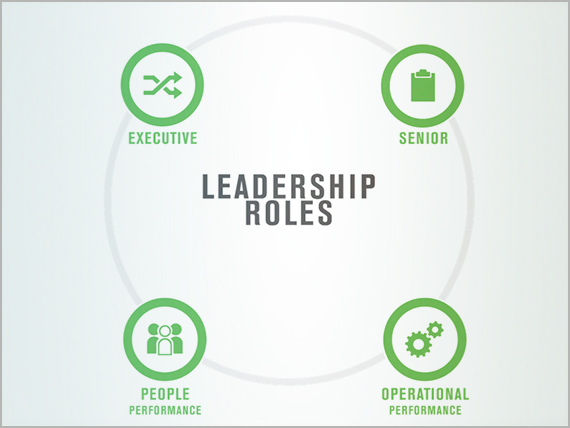Companies spend billions of dollars each year on leadership development. And there is an urgent need to ensure that the next generation of executives is prepared to lead. But the overwhelming number of leadership theories and programs are confusing. What criteria should businesses use to judge whether someone is ready to lead? And how can decision makers know if someone is likely to succeed in a leadership role?
Companies must carefully select, intentionally develop, and strategically deploy leaders for the business to prosper.
Gallup has researched leadership for more than 40 years, interviewing and studying more than 50,000 leaders in many different industries, including healthcare, education, government, financial services, manufacturing, retail, hospitality, and telecommunications. This long-term study has yielded two crucial insights:
- Leadership is best understood as a set of roles in an enterprise. These roles differ in tasks and responsibilities. But viewed together, they provide a complete picture of the leadership needs of a company and how those needs are met.
- The best performers in each leadership role invariably possess the talent and experience to meet the needs of the role and, by extension, the needs of the enterprise.
The first insight defines roles, or the kind of leadership the enterprise needs, while the second insight refers to individual fit, or whether an individual has the right talent, skills, knowledge, and experience for a given role. Together, these two considerations not only define the leadership needs of an enterprise, but they also provide a road map for selecting leaders, providing individual and team development, and managing succession throughout the company.
Above all, this research asks businesses to rethink their definition of leadership -- and who leaders are. Companies should not assume that the term "leadership" applies only to C-level officers or to individuals with particular personality traits. Our research shows that business success depends on a set of leadership roles -- and finding the right leaders to fill those roles requires a disciplined and systematic approach to selection, development, and succession planning.
Four kinds of leaders
Given the dynamic nature of businesses and markets, one of the most complex and difficult challenges facing every enterprise is selecting, developing, and deploying leaders at all levels to meet current and future needs. To meet this challenge, businesses must understand the demands of leadership at different organizational levels and within different roles.
Most successful enterprises require four distinct kinds of leaders:
- Executive leaders navigate toward a desired future. They outline an ideal future state and collaborate with other leaders to bring that state to fruition. Executive leaders constantly adjust enterprise activities and communicate, direct, and align strategy, goals, and resources to make the vision a reality.
- Senior leaders are responsible for profit and loss, and they work across functions to achieve business aims. They plan and execute at a macro level, recognize external factors that affect the business, and position the company to capitalize on market trends. They serve as hubs of information, ensuring that the leaders, managers, and employees -- and the teams and workgroups -- within their chain of command understand the vision set by the executive leadership team, and they pass information from the field to the executive team.
- People performance leaders accomplish their goals by working through the managers they lead. They set the stage for effective performance management and engagement throughout the organization by ensuring that managers and employees have clear expectations and defined career paths. They guide others by coaching and mentoring and promote a strong working environment by creating bonds and promoting engagement among employees.
- Operational performance leaders grow the business by improving efficiencies, maintaining discipline toward meeting business goals, troubleshooting, innovating, and monitoring key metrics.

Selecting, developing, and deploying leaders
Each leadership role is crucial to business success; if one role is missing, the other roles lack necessary information, response systems, resources, or direction. Companies must carefully select, intentionally develop, and strategically deploy leaders for the business to prosper.
To give a business the best opportunity to win, leaders should be selected for a given role because they have the natural ability to thrive in that role. After they are selected, leaders should have opportunities to grow and develop in ways that will help them better meet the demands of their respective roles. This customized approach reduces the temptation to provide ineffective, "one-size-fits-all" training and allows leaders to focus on the areas that will make them -- and in turn, the enterprise -- most successful.
Finally, leaders must have the autonomy and authority to execute in their spheres of influence. Using this approach to integrate leadership throughout the company gives the enterprise the greatest opportunity to thrive and win in a competitive marketplace.